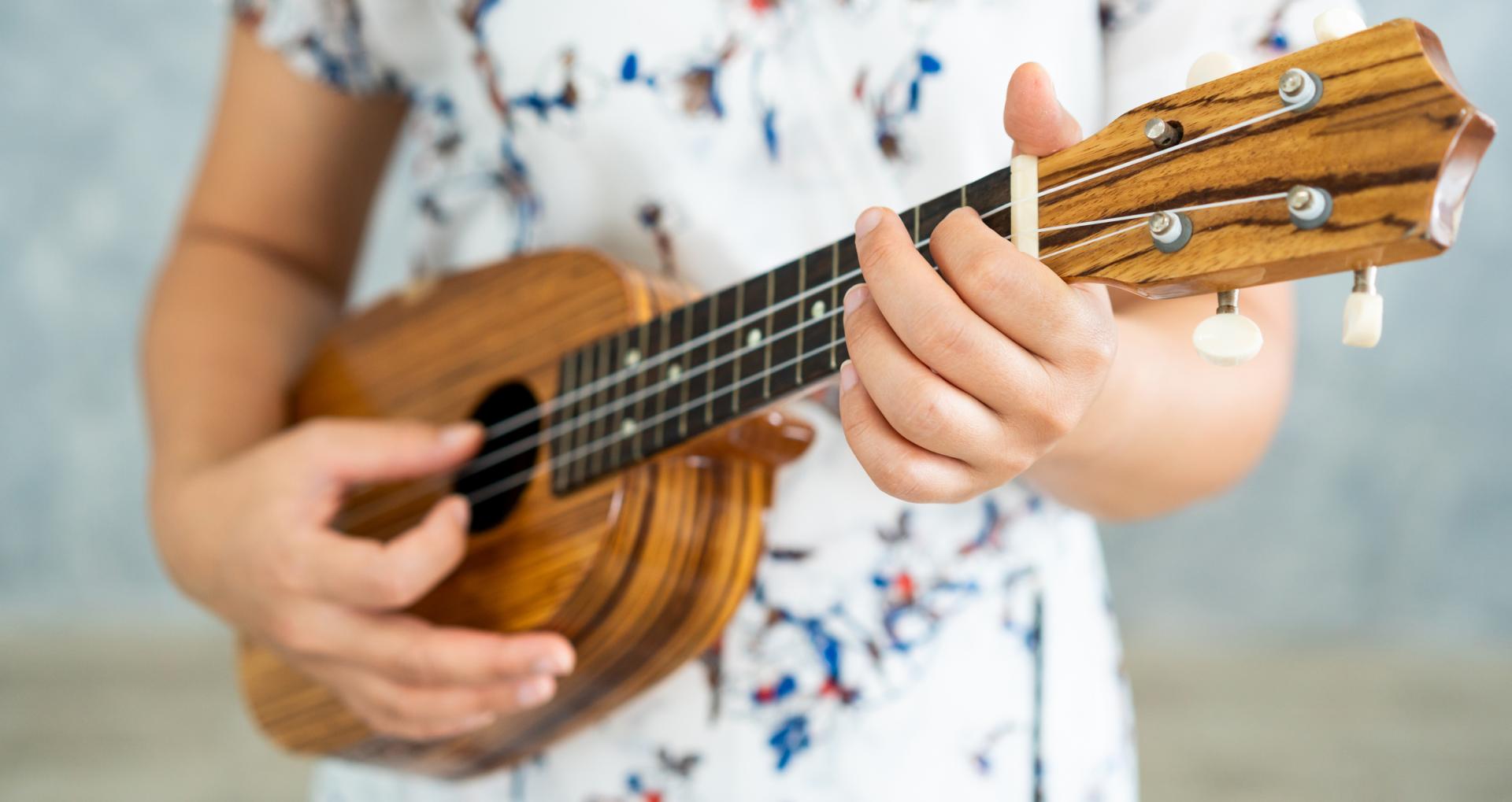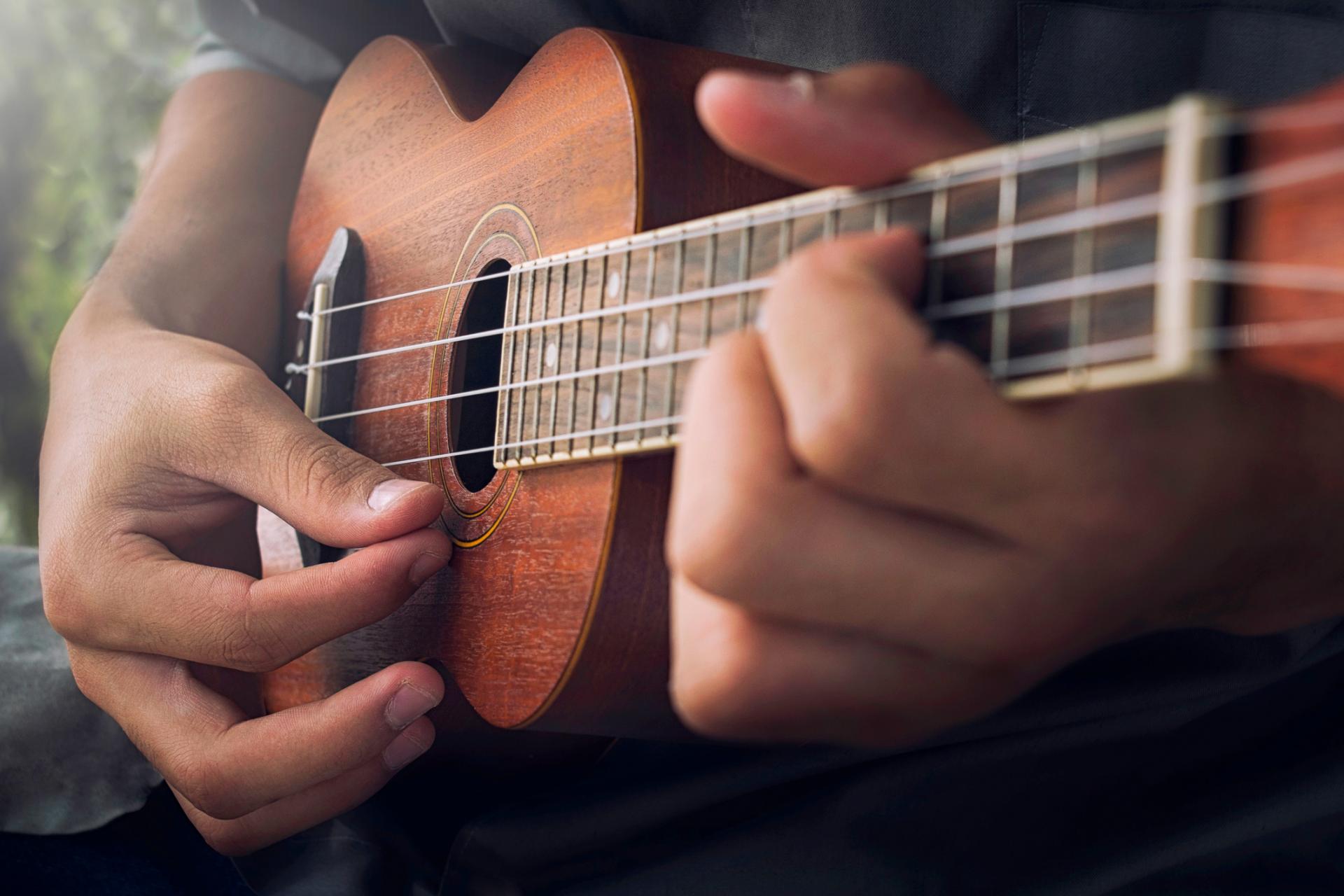



















The ʻukulele is commonly associated with music from Hawaii where the name roughly translates as "jumping flea"perhaps because of the movement of the player's fingers. Legend attributes it to the nickname of the Englishman Edward William Purvis, one of King Kalākaua's officers, because of his small size, fidgety manner, and playing expertise. One of the earliest appearances of the word ʻukulele in print (in the sense of a stringed instrument) is in the Metropolitan Museum of Art's Catalogue of the Crosby Brown Collection of Musical Instruments of All Nations published in 1907. The catalog describes two ukuleles from Hawaii: one that is similar in size to a modern soprano ʻukulele, and one that is similar to a tenor (see § Types and sizes)
Developed in the 1880s, the ʻukulele is based on several small guitar-like instruments of Portuguese origin, the machete, the cavaquinho, the timple, and the rajão, introduced to the Hawaiian Islands by Portuguese immigrants from Madeira and Cape Verde. Three immigrants in particular, Madeiran cabinet makers Manuel Nunes, José do Espírito Santo, and Augusto Dias, are generally credited as the first ukulele makers. Two weeks after they disembarked from the SS Ravenscrag in late August 1879, the Hawaiian Gazette reported that "Madeira Islanders recently arrived here, have been delighting the people with nightly street concerts."
